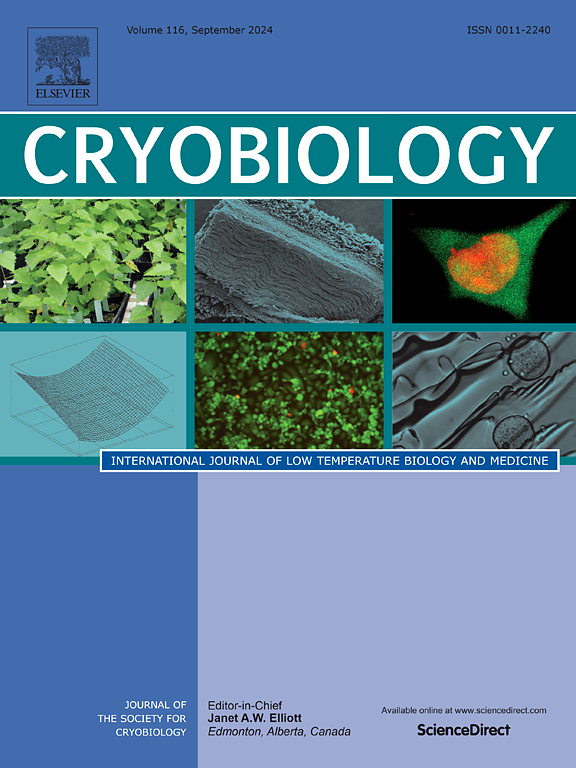Indian cryogenebank conserving diverse plant genetic resources for the last three decades: Achievements and way forward
IF 2.1
3区 生物学
Q2 BIOLOGY
引用次数: 0
Abstract
Ex situ conservation of plant genetic resources (PGR) plays a crucial role in sustainable growth and development, as highlighted by the Global Strategy for Plant Conservation (GSPC). Seed genebanks, a key component of ex situ conservation, have been instrumental in preserving plant diversity. However, challenges arise with the conservation of non-orthodox (recalcitrant and intermediate) seeds and vegetative tissues, which are not amenable to storage in traditional genebanks at temperatures of −20 °C. Cryopreservation, the storage of biological materials at ultra-low temperatures in liquid nitrogen, has emerged as a viable solution for conserving such non-orthodox seeds, pollen, and dormant buds. This review presents insights into the National Cryogenebank Facility at ICAR-NBPGR, India, a pioneer in developing cryopreservation techniques and cryobanking of PGR. Established in 1987, the facility focuses on conserving difficult-to-conserve species of various agri-horticultural crops, including recalcitrant and intermediate species. With a capacity to hold a quarter of a million samples, the facility employs species-specific protocols to conserve rare, threatened, and endangered plant species, wild and weedy crop relatives, and genetic stocks. Over the past 3 decades, cryopreservation protocols have been developed at this facility using a diverse range of explants, including seeds, excised embryos, embryonic axes, pollen grains, and dormant buds. Successful cryopreservation protocols have been developed for temperate and tropical plant species important for horticultural, plantation, agro-forestry, and industrial use. Priority is given to conserving indigenous crop species and capturing the genetic diversity of indigenous tropical and temperate major and minor fruits. Additionally, the facility has successfully conserved pollen grains and dormant buds of tropical and temperate fruit crops, ensuring their viability and survival over extended periods of cryostorage. Furthermore, the cryobank regularly retests cryostored germplasm to assess viability and regrowth, with promising results indicating retention of seed viability even after 25–30 years of cryostorage. This highlights the potential of cryobanking as a long-term solution for conserving plant genetic resources. The National Cryogenebank Facility at ICAR-NBPGR exemplifies advancements in cryopreservation techniques applicable to plant genetic resource conservation, contributing significantly to national, regional and global efforts towards ex situ conservation of difficult-to-store plant species and overall sustainable agricultural development.
印度低温基因库在过去三十年中保护了多种植物遗传资源:成就和前进的道路。
正如全球植物保护战略(GSPC)所强调的那样,植物遗传资源的迁地保护(PGR)在可持续增长和发展中发挥着至关重要的作用。种子基因库是迁地保护的重要组成部分,在保护植物多样性方面发挥着重要作用。然而,在保存非正统(顽固性和中间)种子和营养组织方面出现了挑战,它们不适合在-20°C的温度下在传统基因库中储存。低温保存,即在液氮中超低温储存生物材料,已成为保存这些非正统种子、花粉和休眠芽的可行解决方案。这篇综述介绍了印度ICAR-NBPGR的国家冷冻库设施,这是开发冷冻保存技术和冷冻储存PGR的先驱。该设施成立于1987年,重点保护各种农业园艺作物的难以保护物种,包括抗性和中间物种。该设施可容纳25万个样本,采用特定物种协议来保护稀有、受威胁和濒临灭绝的植物物种、野生和杂草作物亲缘种以及遗传资源。在过去的30年里,这个设施已经开发了冷冻保存方案,使用了各种各样的外植体,包括种子、切除的胚胎、胚胎轴、花粉粒和休眠芽。对于园艺、种植园、农林和工业用途重要的温带和热带植物物种,已经开发出成功的低温保存方案。优先考虑保护本地作物物种和捕获本地热带和温带主要和次要水果的遗传多样性。此外,该设施还成功地保存了热带和温带水果作物的花粉粒和休眠芽,确保了它们在长时间低温储存中的生存能力和存活率。此外,冷冻银行定期对冷冻的种质进行复检,以评估其活力和再生能力,结果表明,即使在冷冻25-30年后,种子的活力仍能保持。这突出了冷冻银行作为保存植物遗传资源的长期解决方案的潜力。ICAR-NBPGR的国家低温基因库设施体现了适用于植物遗传资源保护的低温保存技术的进步,为国家、区域和全球对难以储存的植物物种的移地保护和整体可持续农业发展作出了重大贡献。
本文章由计算机程序翻译,如有差异,请以英文原文为准。
求助全文
约1分钟内获得全文
求助全文
来源期刊

Cryobiology
生物-生理学
CiteScore
5.40
自引率
7.40%
发文量
71
审稿时长
56 days
期刊介绍:
Cryobiology: International Journal of Low Temperature Biology and Medicine publishes research articles on all aspects of low temperature biology and medicine.
Research Areas include:
• Cryoprotective additives and their pharmacological actions
• Cryosurgery
• Freeze-drying
• Freezing
• Frost hardiness in plants
• Hibernation
• Hypothermia
• Medical applications of reduced temperature
• Perfusion of organs
• All pertinent methodologies
Cryobiology is the official journal of the Society for Cryobiology.
 求助内容:
求助内容: 应助结果提醒方式:
应助结果提醒方式:


